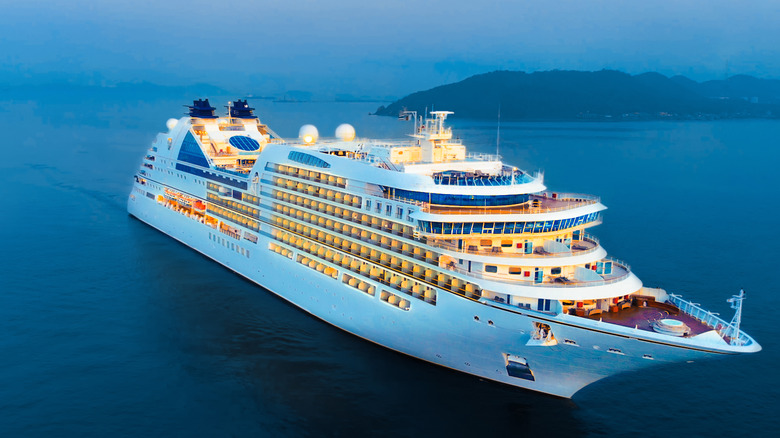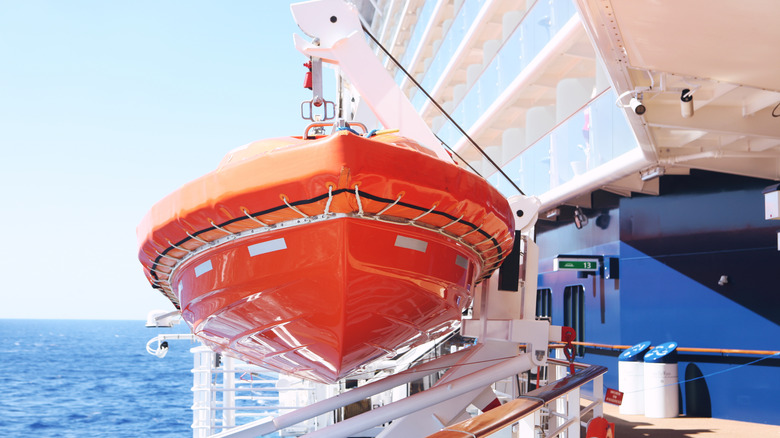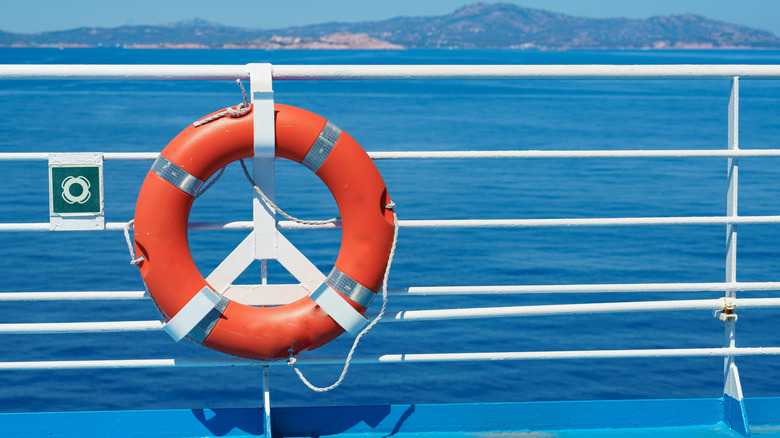The Cruise Ship Muster Drill Explained (And What Happens If You Miss It)
The definition of "muster" is to assemble. Well, a "muster" is also a group of peacocks, and we mustered all of our restraint to not mention that. But, for the purposes of this article, the "assemble" context makes more sense. On a cruise, a muster drill is not a hotdog cart run or a group of peacocks, it's part of the cruise experience. If you've ever been on a cruise, you know what we're talking about. If not, let's ease some condiment-connoting confusion.
As part of the International Convention for the Safety of Life at Sea (SOLAS), all passenger ships must perform a muster drill within 24 hours of disembarking. Sometimes referred to as "lifeboat drill" or "safety drill" (both lacking that old-world, maritime panache), muster drills are mandatory when you take a cruise.
If you don't participate in the muster drill at the appropriate time, the cruise won't throw you in the brig, but if you're really defiant about the process for some reason, you could find yourself marooned.
Muster drills explained
Muster drills differ from cruise line to cruise line, but they're fundamentally drills to show passengers what to do if they need to abandon ship. Although mega-ships seem pretty unsinkable, we've heard that before, and a shivering Leo did, too. Overall, muster drills are easy and short but also mandatory.
Basically, every passenger is assigned an assembly station in accordance with their cabin location. When the ship runs a muster drill, you'll go to your designated assembly station, which is where you'd go in case of an emergency. While there, the crew will explain where your lifejackets are, how to put them on, where the lifeboats are located, and review other safety procedures. Typically, the cruise ship will also sound the emergency alarm to familiarize passengers with the ear-piercing noise.
During COVID-19, cruise lines created e-drills to accommodate social distancing. These drills just included watching a video within a timeframe upon boarding. Some cruise lines still utilize the e-drill format, while others have reverted back to in-person drills.
Muster drill are a must
As mentioned, all passengers are required to participate in muster drills — even children — under SOLAS regulations. When you meet at your assembly station, a crew member runs a roll call. If you don't show, they'll know. Your name and room number will then be reported to the ship's commanding officer.
Typically, cruise ships run a makeup muster drill for all the no-shows. While you may be embarrassed as you hear your name called through the ship-wide speaker system, passengers who show up for a makeup muster drill should enjoy smooth sailing for the rest of the trip.
However, if you refuse to attend the makeup drill as well, the ship may force you to disembark at the next port of call. Again, the muster drills are part of maritime regulation and not optional for crew or passengers. Overall, muster drills aren't a big deal and don't take too long. Even if you feel these drills are a waste of time, muster a bit of cooperation to avoid getting marooned.


